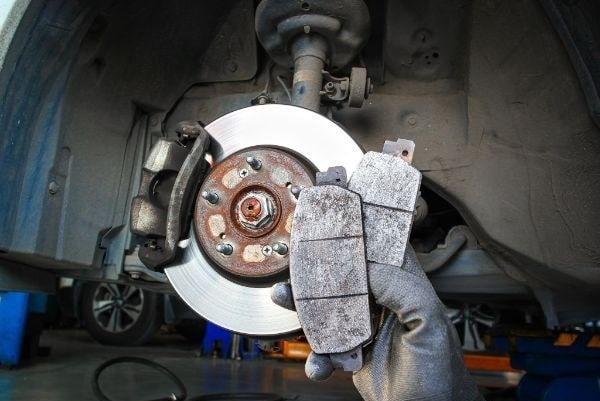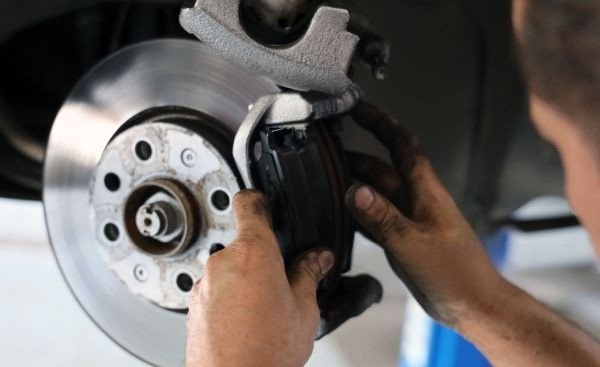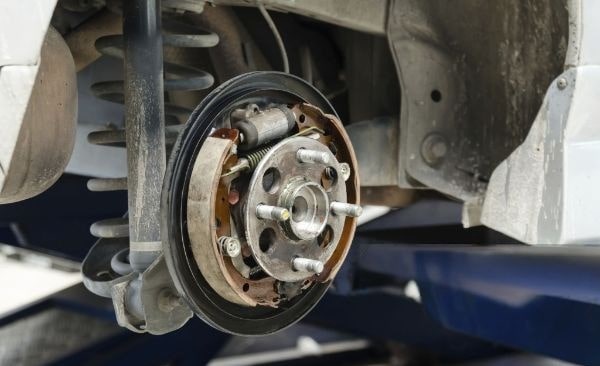Description: Master your vehicle’s brake system with a mechanic’s breakdown of components, failure signs, and pro maintenance tips
Table of Contents
The Lifesaving Role of Brakes
After 12 years turning wrenches, I’ve seen how drivers treat brakes like an afterthought—until they’re stomping on the pedal with a semi-truck ahead. Here’s the hard truth:
-
Your engine makes you go; your brake system lets you live.
-
22% of accidents involve brake-related failures (NHTSA data).
-
Modern brakes are over-engineered… until maintenance gets skipped.

Alt Text: A mechanic’s gloved hand pointing at worn brake pads.
How I Explain Brakes to My Apprentices
New techs always ask why brakes seem simple but fail so often. Here’s my shop whiteboard explanation:
-
The Foot-to-Floor Connection
Your pedal is a lever multiplying force—like using a breaker bar on a stubborn bolt. -
Hydraulic Magic
Brake fluid doesn’t compress, so that pedal push becomes instant clamping force (thanks, Pascal’s Law). -
Friction’s Dirty Secret
Every stop grinds away pad material intentionally—that’s why brake dust coats your wheels.
For nerdy details, I send apprentices to Brake & Front End Magazine.
3 Brake Types You’ll Actually Encounter
1. Disc Brakes (The Gold Standard)
-
Why I Prefer Them: Easier inspections—just peek through your wheel spokes.
-
Watch For: Rotor "lip" at the edges signaling wear.
2. Drum Brakes (The Old Relic)
-
Where They Lurk: Rear wheels of budget cars and heavy-duty trucks.
-
Pet Peeve: Springs that launch into orbit when disassembled.
3. ABS (The Silent Guardian)
-
Real-World Benefit: Prevents skids when panic-braking over potholes.
-
Diagnosis Tip: If the ABS light stays on, wheel speed sensors likely need cleaning.
5 Warning Signs Most Drivers Ignore
From my repair logs, these symptoms get dismissed until it’s too late:
-
"It’s Just a Little Noise"
-
High-pitched squeal = wear indicators screaming for attention.
-
-
Pedal Feels "Mushy"
-
Usually air in lines or deteriorating fluid (test by pumping brakes).
-
-
Steering Wheel Shimmy
-
Warped rotors cause this distinctive vibration at highway speeds.
-
-
Car Pulling to One Side
-
Stuck caliper turning one brake into a drag racer.
-
-
That Weird Burning Smell
-
Glazed pads or seized components—pull over immediately.
-
For quality replacements, I recommend SparesFlex’s brake kits.

My Garage-Approved Maintenance Routine
Every Oil Change (5K-7K Miles):
-
Flashlight check of pad thickness (no thinner than ¼”).
-
Quick rotor inspection for scoring or cracks.
Every 2 Years:
-
Brake fluid flush (it absorbs moisture like a sponge).
Pro Tip:
-
Use a torque wrench on lug nuts—overtightening warps rotors.
When to DIY vs. Call a Pro
| DIY-Friendly | Leave to Mechanics | |
|---|---|---|
| Pad Replacement | ✓ If you have C-clips | ✗ If rotors need machining |
| Bleeding Brakes | ✓ With a partner | ✗ ABS systems |
| Rotor Replacement | ✗ Unless you own dial indicators | ✓ Always for precision |
Final Thought
Brakes are the rare system where "it still works" isn’t good enough. As I tell customers: "Your brakes shouldn’t just stop your car—they should stop your worries."
For parts I trust, visit SparesFlex. Stay safe out there!


